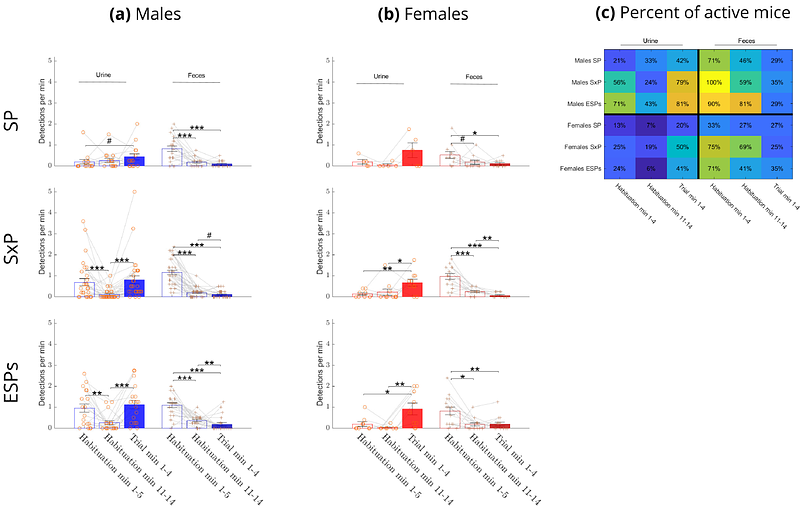DeePosit: an AI-based tool for detecting mouse urine and fecal depositions from thermal video clips of behavioral experiments

DeePosit: an AI-based tool for detecting mouse urine and fecal depositions from thermal video clips of behavioral experiments
Peles, D.; Netser, S.; Ray, N.; Wagner, S.
AbstractIn many mammals, including rodents, social interaction is accompanied by active urination, also known as micturition, for spatial scent marking. Urine and fecal deposits were shown to contain multiple chemosensory cues carrying information regarding the identity, strain, and social rank, as well as the physiological and hormonal conditions of the individual. Moreover, scent marking was shown to be social context-, state-, and experience-dependent. Thus, analyzing scent-marking activity during social interactions may contribute to understanding the structure of mammalian social interactions in health and disease. So far, however, such analysis faced multiple technical obstacles. Mainly, the commonly used void spot assay relies on detecting urine traces left over a filter paper on which the social interaction occurred; thus, it lacks temporal information and is prone to artifacts such as urine smearing. Recently, several studies employed thermal imaging for spatiotemporal analysis of scent marking, as urine and feces are deposited at body temperature and get rapidly cold afterward. This analysis, however, was done so far manually, which made it time-consuming and prone to bias by the observer. Here, we combine thermal imaging, computer vision tools, and an open-source algorithm incorporating a transformer-based video classifier to automatically detect and classify urine and fecal deposits made by male and female mice during several social behavior tests. We found distinct dynamics for urine and fecal depositions in a test- and sex-dependent manner, suggesting two distinct processes of scent marking in mice. The method and tools presented here allow researchers an easy, efficient, and unbiased spatiotemporal analysis of scent marking during behavioral experiments.


